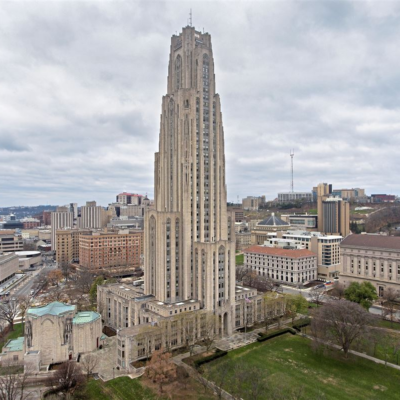The streetwear industry, known for its vibrant energy, rebellious spirit, and deep ties to urban culture, is undergoing a transformation. Streetwear brands are increasingly turning to artificial intelligence (AI) to create cutting-edge graphic designs, revolutionizing how collections are conceptualized, designed, and marketed. From iconic names like Supreme and Off-White to emerging labels, AI-generated graphic designs are not just a trend—they’re shaping the future of streetwear fashion. This shift is sparking excitement, debate, and a redefinition of creativity in an industry that thrives on pushing boundaries. Let’s dive into how streetwear brands are embracing AI, the opportunities it brings, and the challenges it poses.

The Rise of AI in Streetwear Design
Streetwear has always been about self-expression, blending influences from hip-hop, skate culture, and urban art. Graphic tees, hoodies, and sneakers often feature bold logos, striking visuals, and cultural references that resonate with youth culture. Traditionally, these designs were crafted by human artists who poured their creativity into every piece. But now, AI-powered tools like Midjourney, DALL-E, and Canva’s Magic Media are changing the game.
AI-generated graphic designs allow brands to produce high-quality visuals at unprecedented speeds. By inputting text prompts—such as “futuristic cyberpunk streetwear logo” or “graffiti-inspired abstract pattern”—designers can generate unique images in seconds. These tools analyze vast datasets, pulling from art, fashion, and cultural trends to create designs that feel fresh and relevant. For streetwear brands, this means faster production cycles, lower costs, and the ability to experiment with ideas that might have been too time-intensive or expensive before.
Why Streetwear Brands Are All In
The adoption of AI in streetwear is driven by several factors. First, speed is king in fast fashion. Streetwear thrives on limited-edition drops and quick responses to cultural moments—think Supreme’s weekly releases or collaborations tied to music festivals. AI enables brands to design and produce graphics in hours, not weeks, keeping them ahead of trends.
Second, AI democratizes creativity. Smaller brands or independent designers, who may lack the budget for a full design team, can now access professional-grade tools. Platforms like Canva offer user-friendly interfaces, making AI design accessible to anyone with a vision. This levels the playing field, allowing new voices to emerge in the competitive streetwear scene.

Finally, AI fuels experimentation. Streetwear is about breaking rules, and AI lets brands explore wild, unconventional ideas. Want a surreal mashup of 90s hip-hop aesthetics and sci-fi dystopia? AI can deliver multiple variations instantly, giving designers a sandbox to play in.
Real-World Examples: AI in Action
Several streetwear brands are already harnessing AI to stunning effect. Off-White, known for its bold typography and industrial-chic vibe, has experimented with AI to generate campaign visuals that blend high fashion with street edge. In 2023, the brand used AI to create digital “twins” of clothing for virtual runways, reducing the need for physical samples.
Emerging labels are also making waves. Take Golf Wang, Tyler, The Creator’s colorful streetwear line. The brand has used AI to churn out playful, eclectic patterns for its tees and hoodies, featuring everything from cartoonish smiley faces to psychedelic abstracts. These designs, generated in minutes, capture Golf Wang’s irreverent spirit while keeping production lean.

Even luxury streetwear brands like Balenciaga are dipping their toes in AI. By using generative tools to prototype patterns and logos, they’re streamlining their design process, allowing creative directors to focus on big-picture storytelling rather than repetitive tasks.
The Creative Debate: Innovation or Threat?
While AI’s potential is undeniable, it’s not without controversy. Streetwear is deeply rooted in human creativity, and some designers worry AI could dilute the soul of the craft. Traditional graphic artists fear job losses, as brands lean on algorithms over human talent. In a 2025 interview with Vogue Business, a veteran streetwear designer expressed concern: “AI can mimic style, but it can’t replicate the lived experience that shapes our work.”
There’s also the question of authenticity. Streetwear fans value originality and cultural context—qualities that AI, trained on existing data, might struggle to capture. If every brand uses the same AI tools, could designs start to feel generic? Critics argue that overreliance on AI risks turning streetwear into a sea of algorithm-driven sameness.
On the flip side, many designers see AI as a collaborator, not a replacement. “It’s like a paintbrush,” says Mia Chen, a Brooklyn-based streetwear artist. “AI gives me raw material, but I shape the story.” By refining AI-generated designs, artists can focus on higher-level creative decisions, like brand identity or cultural messaging. This hybrid approach—human intuition plus AI efficiency—is gaining traction across the industry.
Ethical and Practical Challenges
AI in streetwear also raises ethical questions. Many AI models are trained on vast image datasets, some scraped from the internet without artists’ consent. This has sparked debates about intellectual property and fair compensation. If an AI generates a design based on a lesser-known artist’s work, who gets credit? Streetwear brands, already scrutinized for cultural appropriation, must navigate these murky waters carefully.
There’s also the environmental angle. While AI can reduce physical prototyping (cutting down on waste), the tech itself is energy-intensive. Data centers powering AI models consume massive electricity, prompting brands to weigh their sustainability commitments against the benefits of digital design.
What’s Next for AI in Streetwear?
The future of AI in streetwear is brimming with possibility. As tools evolve, we’ll likely see more integration with augmented reality (AR) and virtual fashion. Imagine trying on an AI-designed hoodie in a digital fitting room or seeing your custom graphic tee come to life via AR filters on Instagram. Brands like Mango are already blending AI-generated campaigns with virtual models, hinting at a world where physical and digital fashion coexist.
Personalization is another frontier. AI could let fans co-create designs, inputting prompts to generate one-of-a-kind pieces. This aligns perfectly with streetwear’s ethos of individuality, turning consumers into collaborators. Nike’s By You platform, which lets users customize sneakers, could expand with AI-driven graphic options, making every pair a unique statement.
Education is also key. Design schools, like Nanyang Academy of Fine Arts, are weaving AI into their curricula, training the next generation to wield these tools thoughtfully. By fostering a mindset of experimentation, they’re ensuring AI enhances creativity rather than stifling it.
A New Chapter for Streetwear
Streetwear has always been about evolution—taking subcultures mainstream, blending high and low fashion, and redefining what’s cool. AI-generated graphic designs are the latest chapter in this story, offering brands a chance to innovate, democratize creativity, and stay ahead of the curve. Yet, as with any disruption, balance is crucial. Streetwear must honor its human roots while embracing tech’s potential, ensuring that the culture’s heart beats strong.
For fans, designers, and brands alike, AI is an invitation to dream bigger. It’s a tool to amplify voices, spark bold ideas, and keep streetwear at the forefront of cultural relevance. As the industry navigates this shift, one thing is clear: the streets are still speaking, and AI is helping them roar.
Must Read :- Gen Z Is Bringing Back 2000s Fashion Aesthetics Through Instagram Reels






